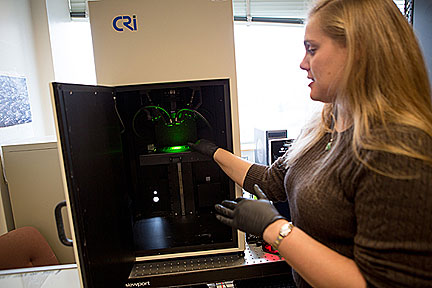Nanotube Sensors Could Lead to Long-Term Health Monitoring
 Nov-04-13
Nano-based sensors able to be implanted under the skin for a year could provide researchers with new information as to how nitric oxide reacts with both healthy and cancerous cells.
Nov-04-13
Nano-based sensors able to be implanted under the skin for a year could provide researchers with new information as to how nitric oxide reacts with both healthy and cancerous cells.The tiny, carbon nanotubes developed in MIT’s lab are the first nanosensors that can be used in the body for such an extended period of time. The team created two types of implants—one that could be injected into the bloodstream for short-term monitoring and another, longer-term sensor embedded in a gel made from a polymer found in algae. In tests on mice, the gel-wrapped sensor stayed in place and functional for 400 days, and the team believes that it could last longer.
The sensor information can be read by shining a near-infrared laser onto the device, through the skin.
According to Michael Strano, Professor of Chemical Engineering at MIT, "Nitric oxide has contradictory roles in cancer progression, and we need new tools in order to better understand it. Our work provides a new tool for measuring this important molecule, and potentially others, in the body itself and in real time." The team is also working on sensors able to detect other molecules, such as glucose.
Image: Nicole Iverson demonstrates the instrument used to measure the fluorescent signal from nanotube sensors that detect nitric oxide.

More Info about this Invention:
[EUREKALERT.ORG][MIT]

Add Your Comment